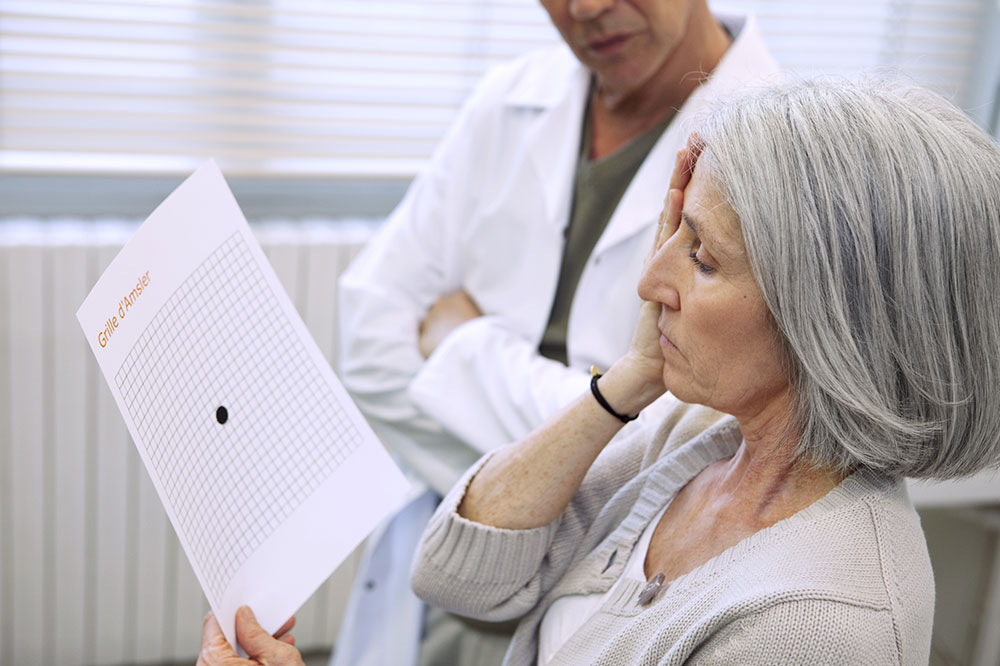
Macular degeneration – Types and management
Macular degeneration is an eye-related illness that usually develops due to old age. It develops in the central part of the eye called macula and this leads to a loss of vision or distorted vision. Since it particularly affects older people, it is also called age-related macular degeneration (AMD). Let’s take a look at the types of AMD, diagnosis, treatment, and foods that help manage the symptoms and keep eye health in check.
Signs and symptoms
Straight lines start to look wavy and the central vision becomes blurry with time. It also becomes difficult to differentiate between colors, especially pastel ones and if the environment only has dim light, then seeing things and people becomes tougher.
Causes and risk factors
While the cause is not particularly understood, there are some risk factors that are to be considered. These include any family history of AMD, high blood pressure, high cholesterol, high sun exposure, and poor nutrition regime. Moreover, AMD usually develops in those above 65 years old and females are at higher risk probably due to their long age. Further, those with light-colored eyes are at a higher risk of developing AMD.
Types of AMD
Dry AMD: This type is common in about 80% of those who have AMD. Dry AMD is when the macula in the eye gets thinner with old age and a protein called drusen starts growing in clumps, making it difficult to see.
Wet AMD: This is a not-so-common but severe type of AMD. There are new and abnormal blood vessels formed under the retina, which may leak and cause faster degeneration of vision. It may even cause scarring to the macula.
Diagnosis and treatment
Looking at an Amsler Grid helps notice any blurry vision. The doctor can also use a lens to look at the eye and understand the health of the retina and macula. The eye doctor may even put dilating eye drops which help widen the pupil making it easier to see inside.
A machine too can scan the eye to provide a detailed image and this diagnosis is called a Optical Coherence Tomography. Another method called fluorescein angiography uses a yellow dye that is injected into the vein in your arm which travels through the blood vessels illuminating them. A doctor then studies the blood vessels in the eyes through a special lens which gives them an idea about the health of the retina and macula.
It is difficult to treat dry AMD however some nutrition supplements may be helpful which the doctor may prescribe. However, for Wet AMD, a laser surgery can be done that shines at the abnormal blood vessels, slowing down any leakage of blood or any other fluids. Anti-VEGF treatment is also possible which involves injecting a product into the eye through the use of a very thin needle.
Foods to eat
Omega-3 fatty acids: Fish like salmon, sardine, cod, herring, lake trout are some great sources of omega-3 fats. They also are lean proteins which are good for your health any day! It is studied that omega 3 fats, especially DHA are found in the eye; the retina. It is also found in the brain and sperm cells.
Zinc and copper: Consumption of copper rich food increases the functioning of the antioxidant enzymes in the eye. Zinc is responsible for absorption of vitamin A which regulates healthy cellular functioning. Both these components are essential! Include foods like chickpeas, shellfish, legumes, meats, dark leafy greens, eggs and nuts.
Antioxidants: Vitamins like A,C,E are essential for eye health because they help fight off any cell damage in the body. These vitamins can be delivered through leafy greens, citrus fruits, and nuts and seeds which are rich in vitamin E. It is also possible to use the nuts and seeds in oil form like olive oil which can be used in cooking or salad dressing.
Foods to avoid
A simple guide to food to avoid would be to stop consuming any trans fats and foods which are bad for your heart. These fatty, oily, processed and fried food clog blood vessels that reach both your heart as well as your eyes.




